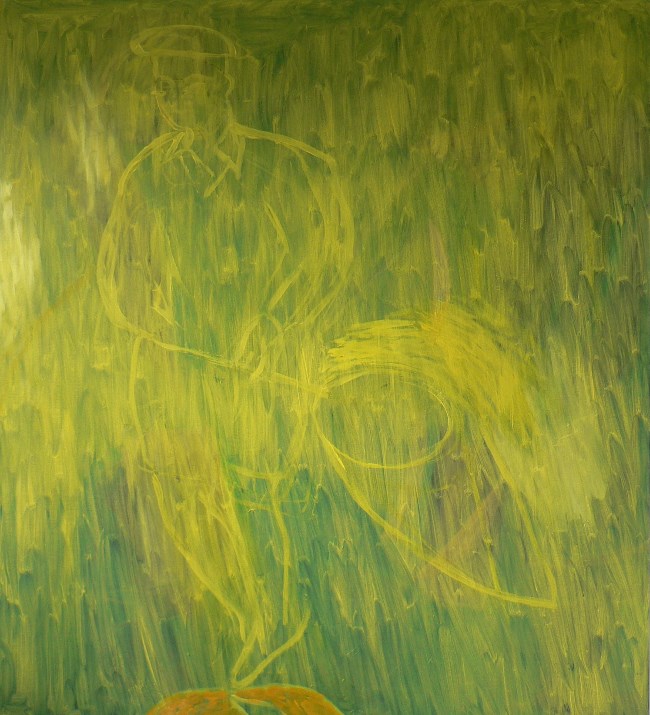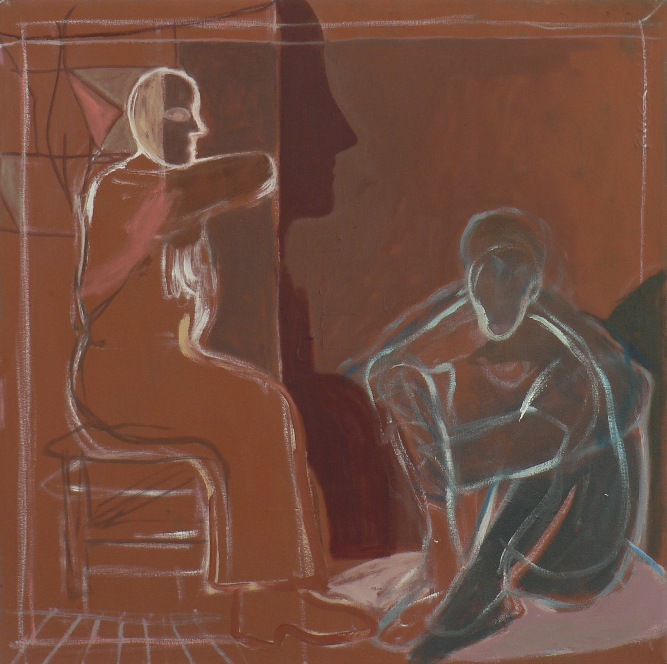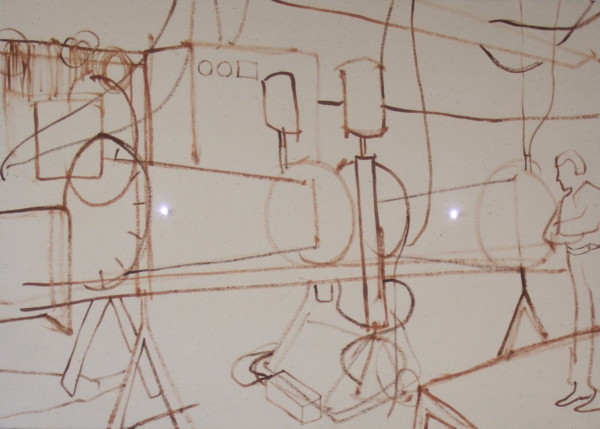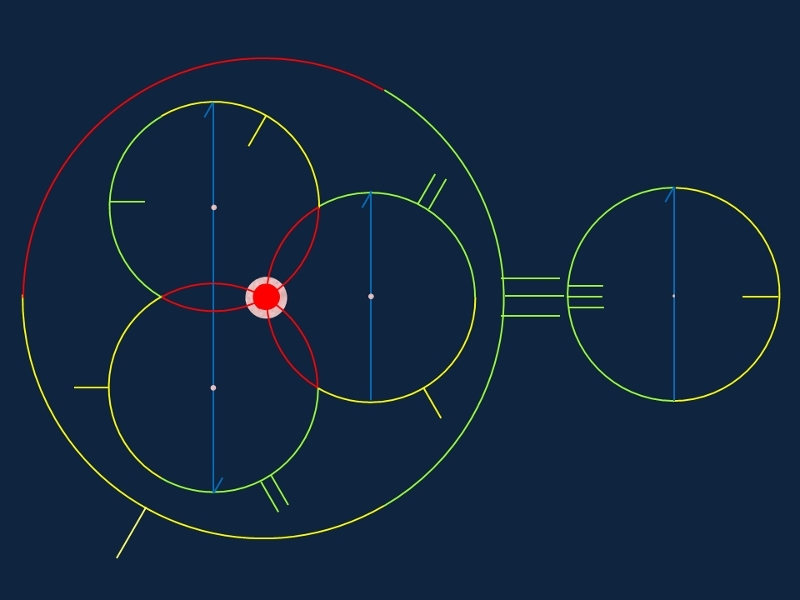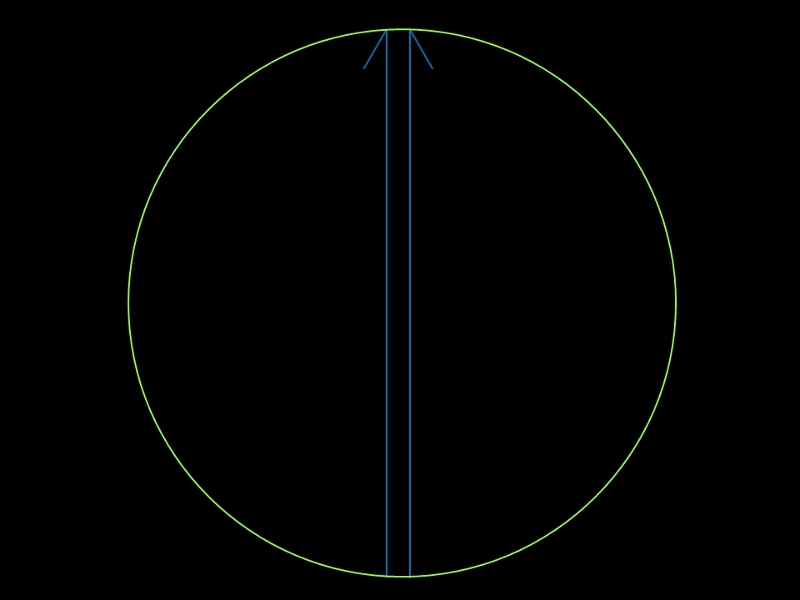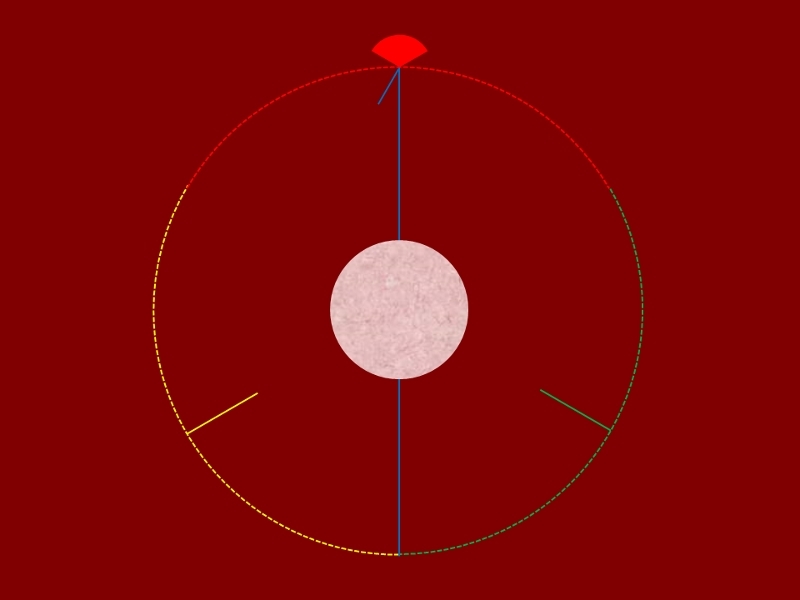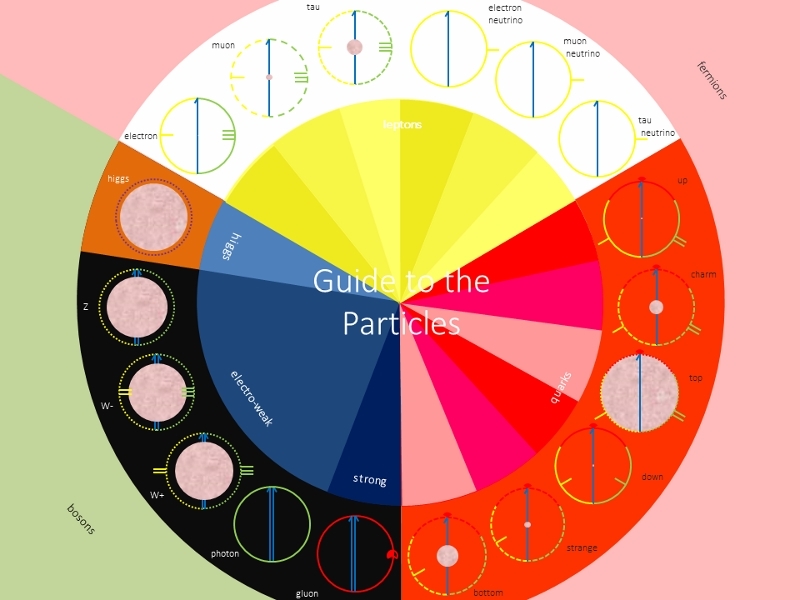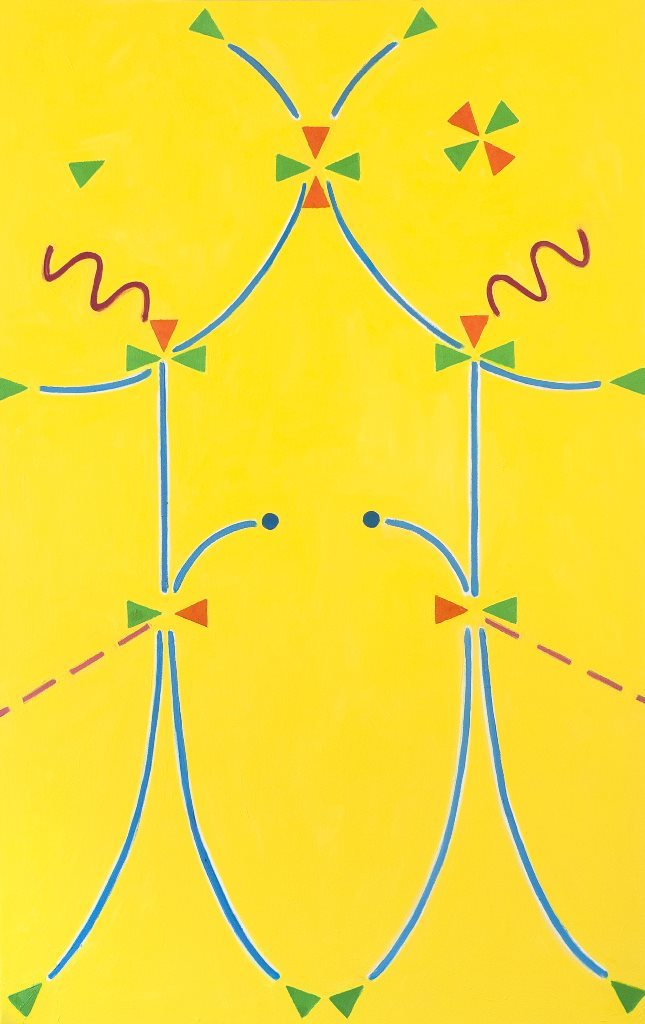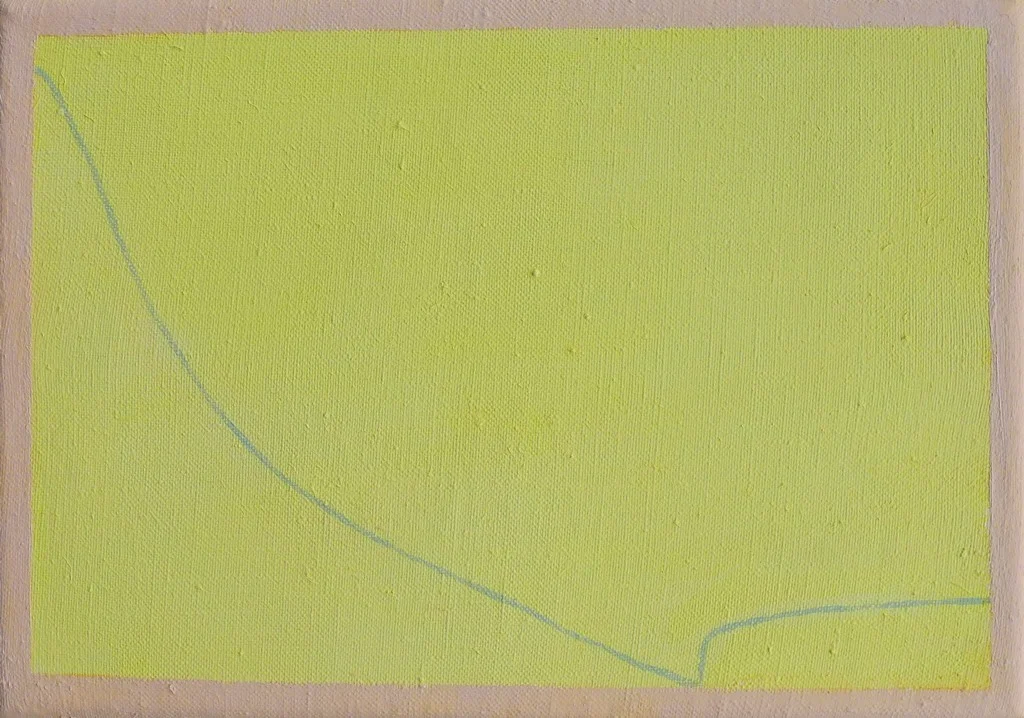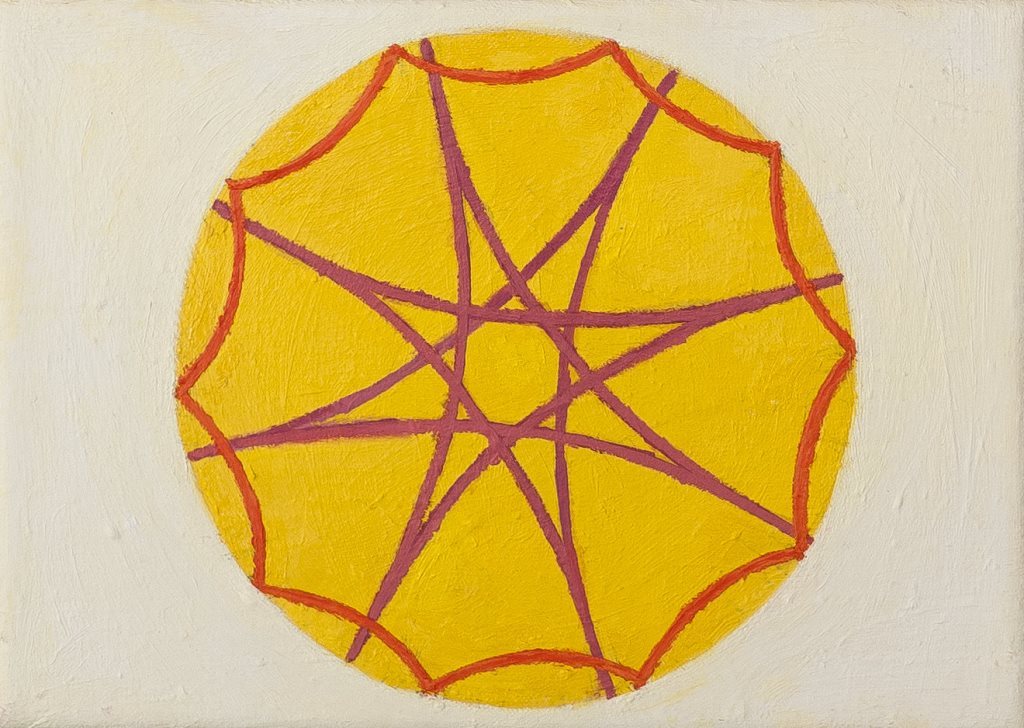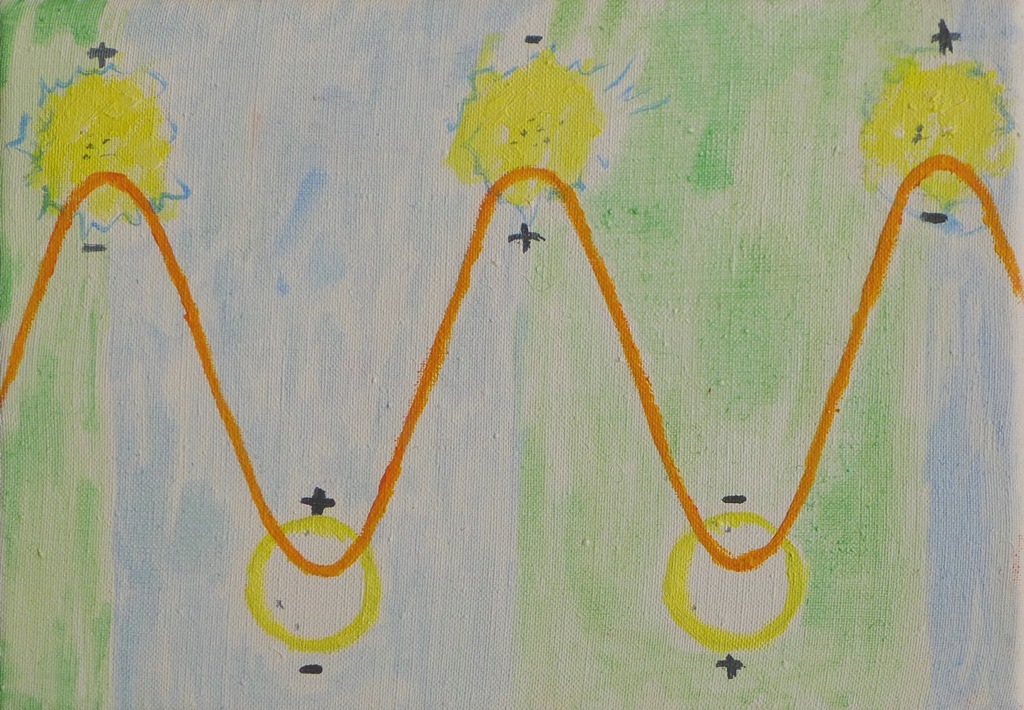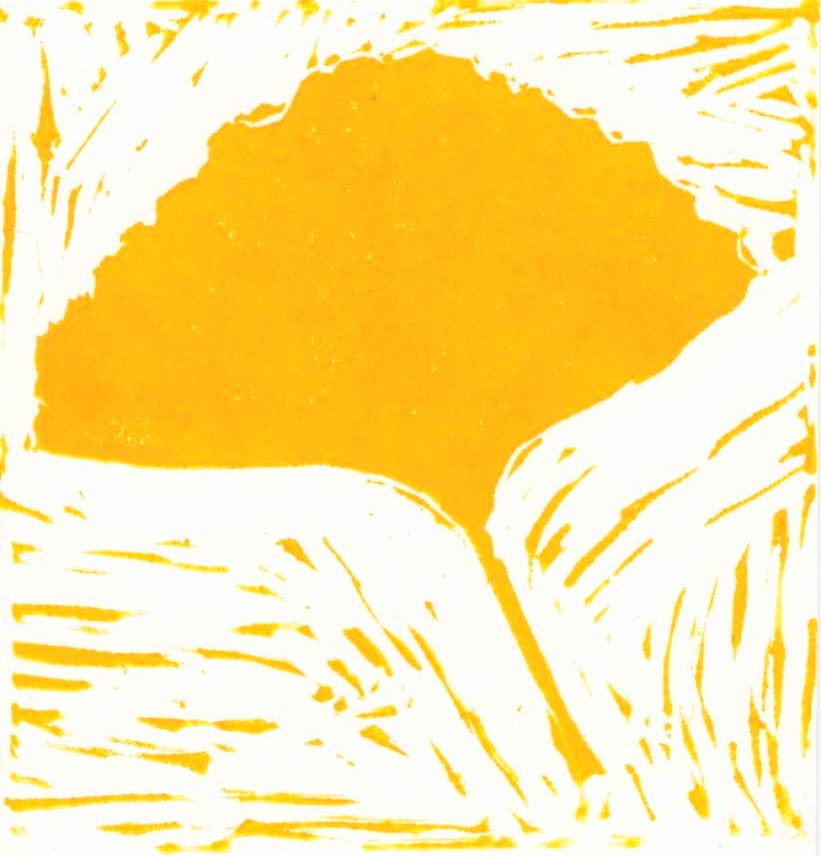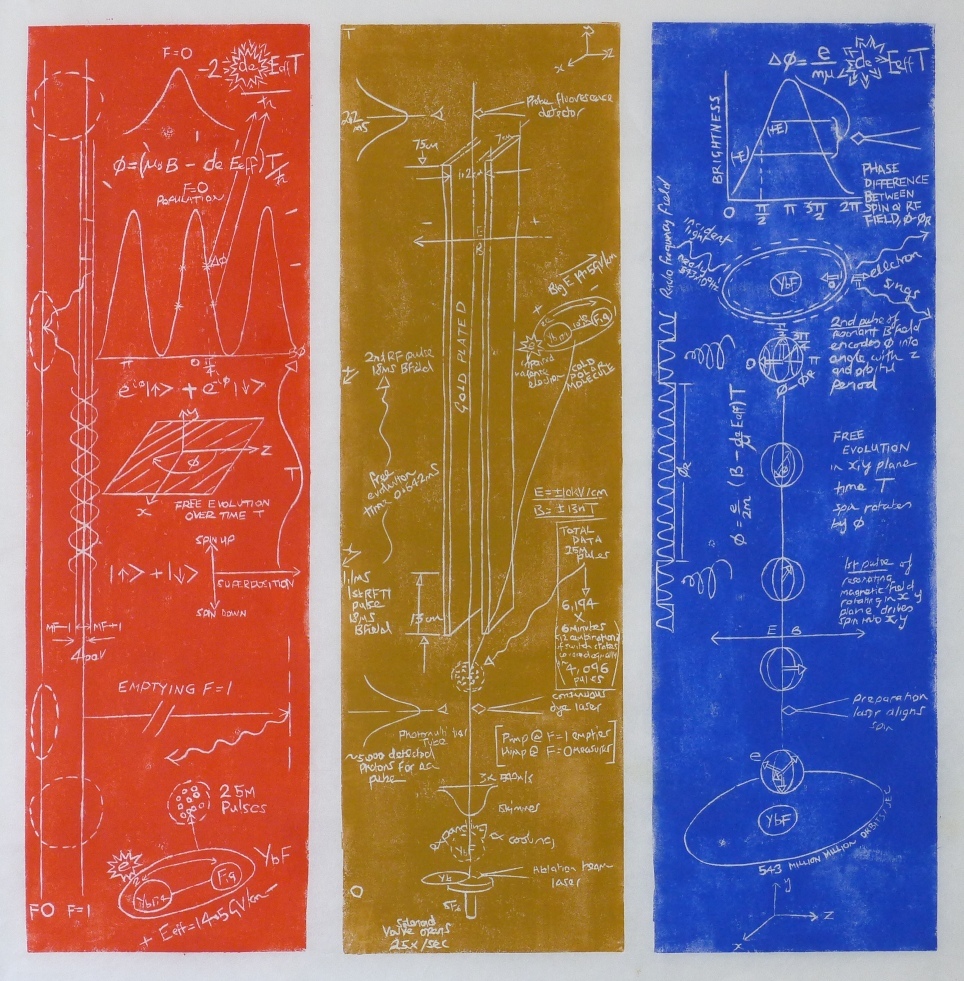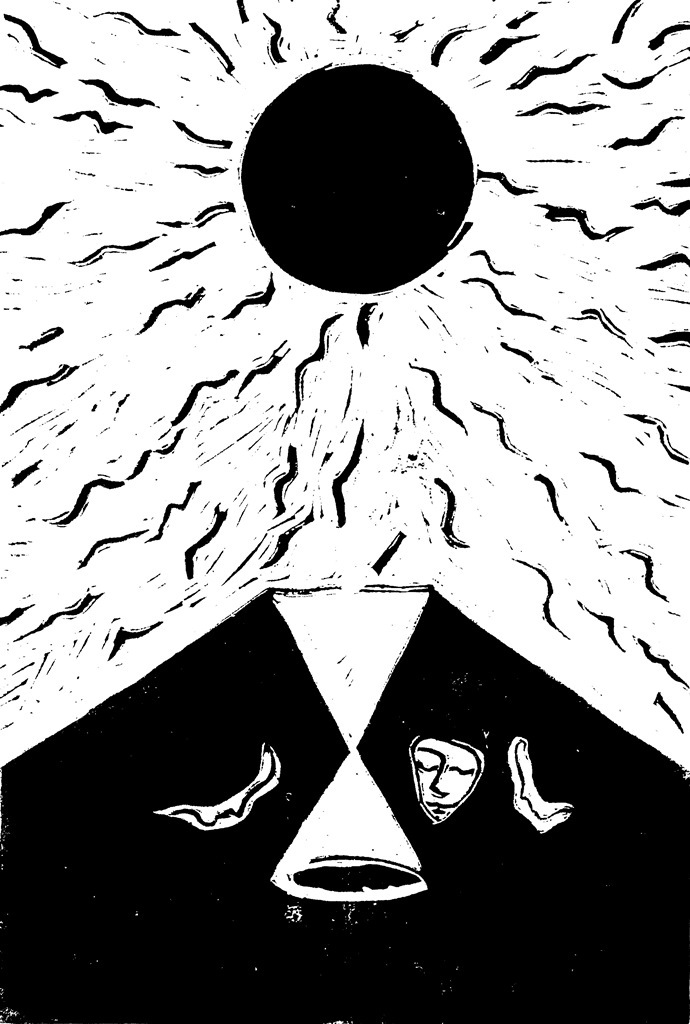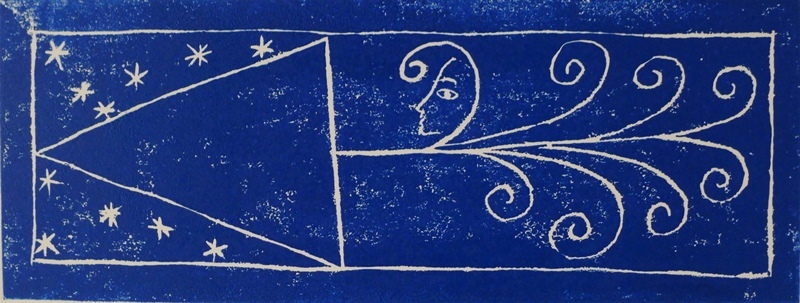Earlier paintings, drawings, prints and design projects are here.
Guide to the Particles
Extracts from a guide to the basic building blocks that make up the Universe; based upon new conventions designed as the basis for a student pocket book. 2015 - 2016.
Sun Paintings
All life on Earth owes itself to the Sun, our nearest star. This series of paintings shares some of the things we know. 2013 - 2014.
Rockets
Banners celebrating discovery. 2014.
SKETCHBOOK
Sketches made around the Physics Department of Imperial College in 2011 - 2012.

A talk by David Jennings
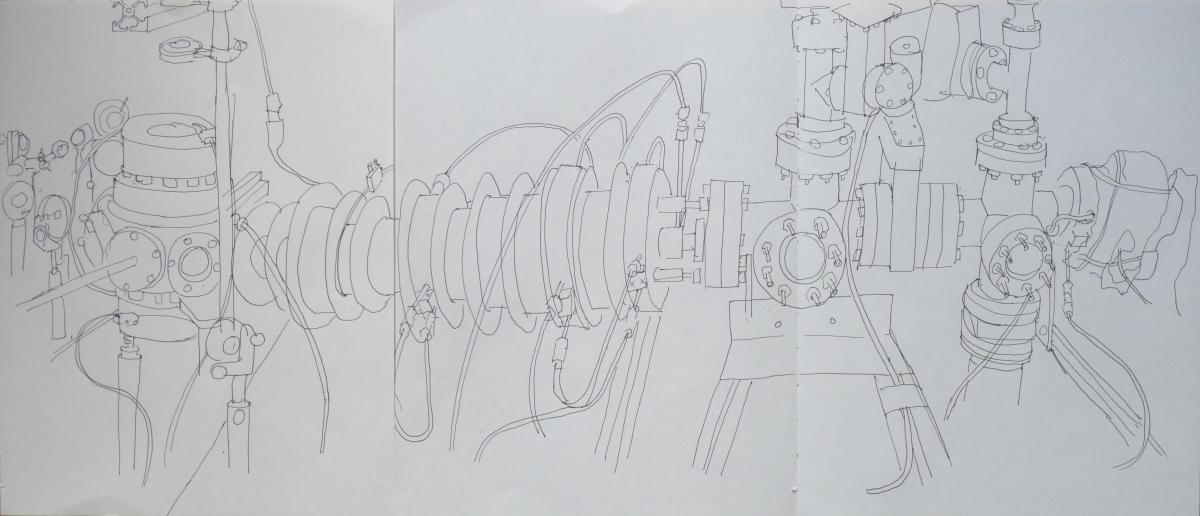
Mike Tarbutt's laboratory.
This is the first drawing in a series.
Lithium atoms are evaporated on the right hand side using an oven to create a beam travelling at around 1000 m/s (nearly three times the speed of sound in vacuum) and bought in the space of a table-top to an approximate standstill by pelting them with finely tuned photons of light each of just the right colour (energy) to be absorbed by the atoms when accounting for the doppler effect. As the atoms slow, the magnitude of this effect changes, so solenoids are used along the atoms' line of travel to adjust the quantum energy levels, so they continue to absorb the light photons.
The marvellous result is a tiny cloud of lithium atoms at a temperature that is colder than space in the left hand chamber - one billion atoms in a tiny red bean - visible to the naked eye. The next stage of this experiment will be to attempt to cool molecules using this little cloud.

In a subterranean lab and over a period of ten years or so, a small team of researchers have built the best machine in the world dedicated to measuring the shape of the electron which is one of our infinitesimally small indivisible constituents of matter. This elegant and economical experiment, described in Nature as "a low energy window on the high energy soul of the cosmos", may produce findings that have far reaching implications for our understanding of the universe.
This study is one of a series, the result of several hours spent sitting with the experiment.

In a subterranean lab and over a period of ten years or so, a small team of researchers have built the best machine in the world dedicated to measuring the shape of the electron which is one of our infinitesimally small indivisible constituents of matter. This elegant and economical experiment, described in Nature as "a low energy window on the high energy soul of the cosmos", may produce findings that have far reaching implications for our understanding of the universe.
This study is one of a series, the result of several hours spent sitting with the experiment.

Sitting in the laboratory where they are measuring the shape of the electron, when I made this drawing, in particular, I was struck most by the spectacular splashes of colour given by the laser light, computer screens and digital displays.

Two physicists working on the optics table which is part of a molecule cooling experiment that could be part of the next generation of the experiment to measure the shape of the electron.

Two physicists glimpsed working on the optics table which is part of a molecule cooling experiment that could be part of the next generation of the experiment to measure the shape of the electron.

Two physicists glimpsed working on the optics table which is part of a molecule cooling experiment that could be part of the next generation of the experiment to measure the shape of the electron.

Peter Torok's photonics laboratory which is all about looking at things.
Pencil and coloured pencil, 36 x 54 cm





In this laboratory the team work to create some of the shortest and most powerful light pulses in the world. The pulses are of the order of several millionths of billionths of a sceond and can carry the power of 180 power stations. The aim is to use these light pulses to find out about the dynamics of some of our smallest and very fast moving particles, such as electrons.
Pencil and coloured pencil, 36 x 54 cm

In this laboratory the team work to create some of the shortest and most powerful light pulses in the world. The pulses are of the order of several millionths of billionths of a sceond and can carry the power of 180 power stations. The aim is to use these light pulses to find out about the dynamics of some of our smallest and very fast moving particles, such as electrons.
Pencil and coloured pencil, 36 x 54 cm
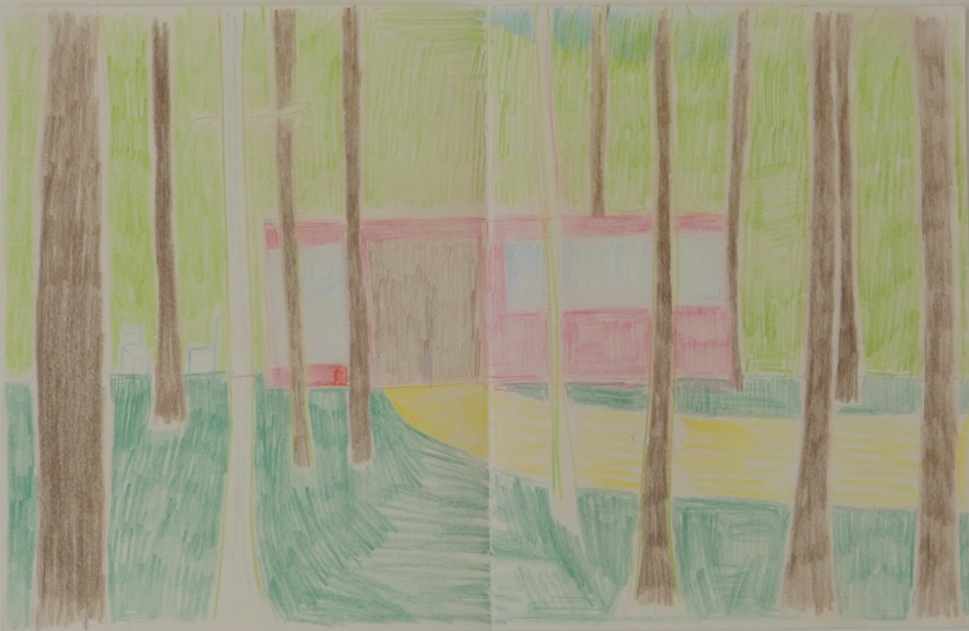
Coloured pencil study on paper. 30 x 45 cm.
The dream of a place to work, surrounded by trees, without traffic vibrations, magnetic fields and disturbance.


Sean Barrett leads a breakfast meeting with the Quantum Information Group - presenting a theoretical paper he co-wrote some years ago and news of some recent experimental results. 13th March 2012.

In a basement lab, the Magpie team explore the dynamics of plasma and star formation.

Andrew Parry, lecturing to new students

Charcoal on paper, 2m x 1m.
Made with the help of physicist, David Jennings. Our email conversation is here.

Andrew Parry

Jerome Gauntlett

Jerome Gauntlett

Jerome Gauntlett

Roberto Trotta

Kellogg Stelle

Subu Mohanty

Subu Mohanty

Terry Rudolph on teleportation

Peter Torok, students, equations and a Van de Graff generator.

Conducting polymers - team meeting with Jenny Nelson


Jonathan Halliwell

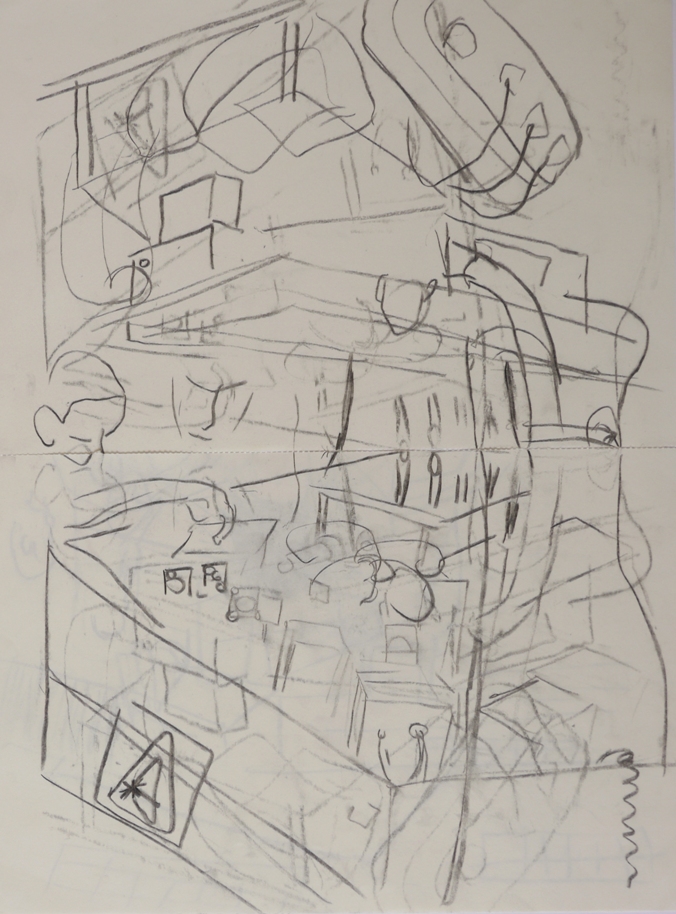
Made in the laboratory of Danny Segal and team when they have the remarkable situation of a single cooled atom in a chamber, that when struck just right with a well tuned laser emits light barely visible to the naked eye. A marvel of nature.

Frank Berkshire

Frank Berkshire



Robert Kingham

Andrew Jaffe
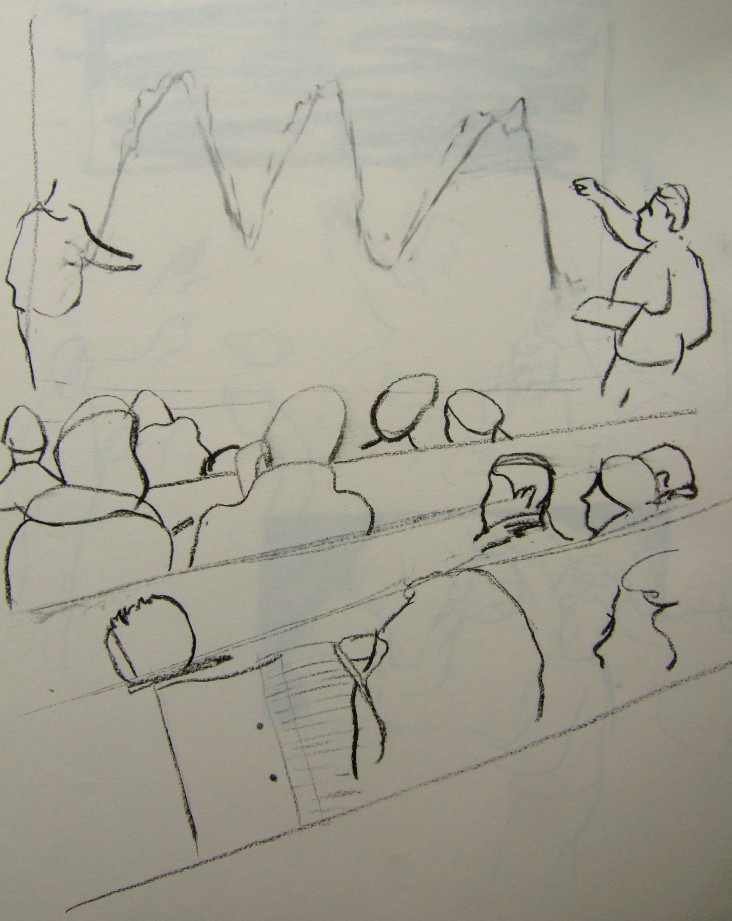


Two delegates: ‘How the Brain Works’ - insights from complexity and self organisation’ at Imperial College on 21st September 2011.


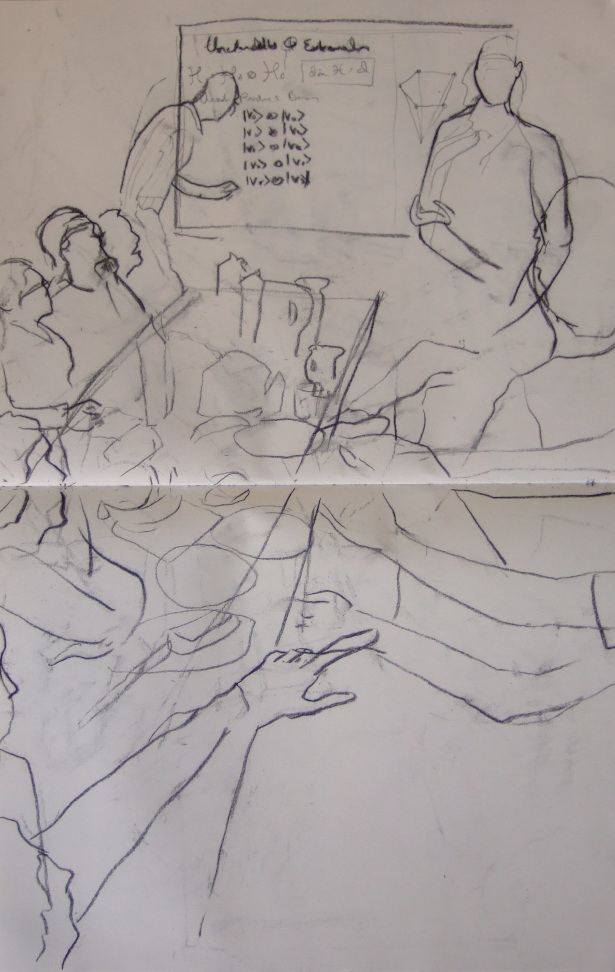



Robert Kingham
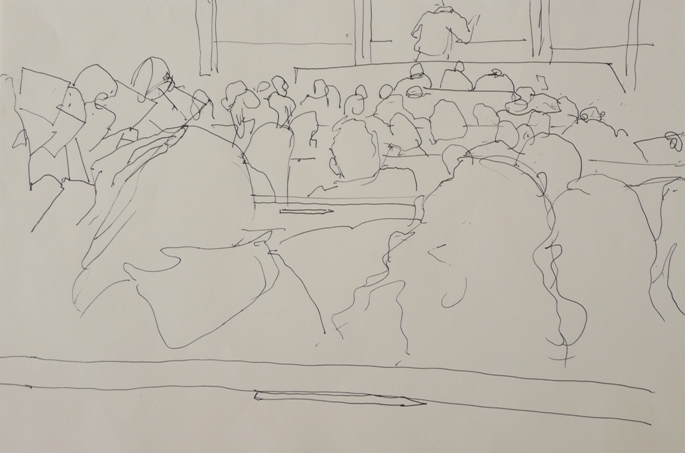

Andrew Jaffe

Subu Mohanty

Jonathan Halliwell


Steve Schwartz

Steve Schwartz

Steve Schwartz

Studies made on 7th June 2011 - the week when the team published its findings on the shape of the electron.






Watercolour on paper, 42 x 30 cm

































































ROYAL SOCIETY EXHIBITION
Exhibited at the Royal Society in the 'Beyond Ourselves' Exhibition, 2011.

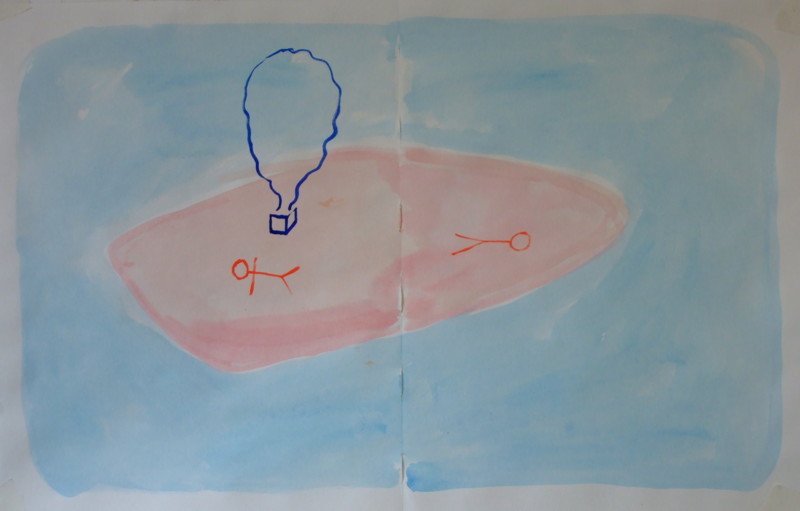



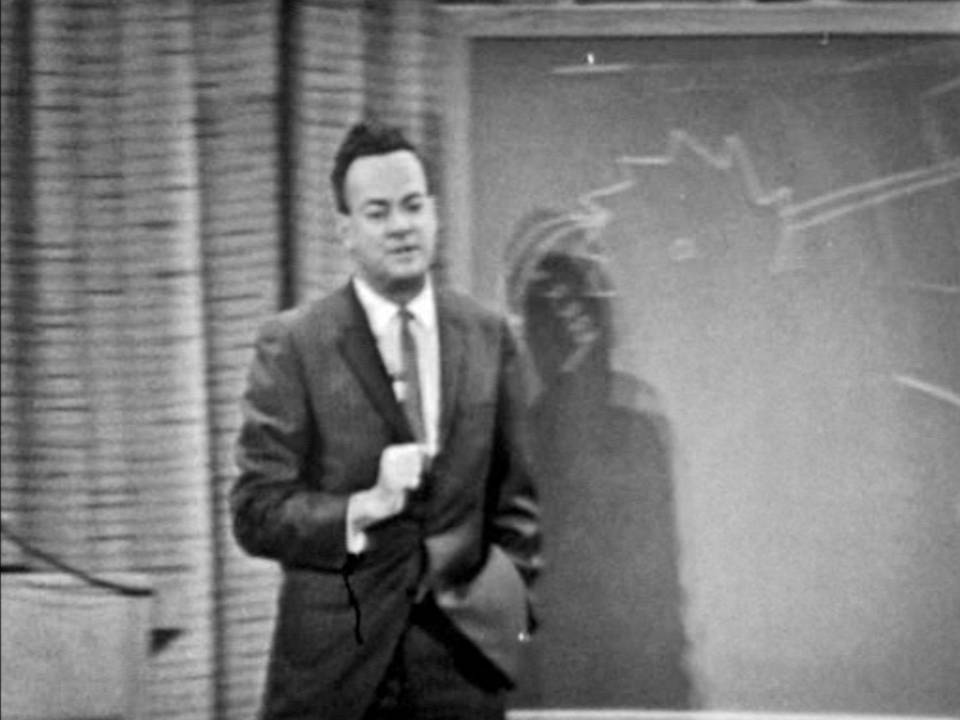
PRINTS
Lino cut prints made for various projects
PAINTINGS ABOUT DISCOVERY
Mostly large oil paintings made before 2011.







